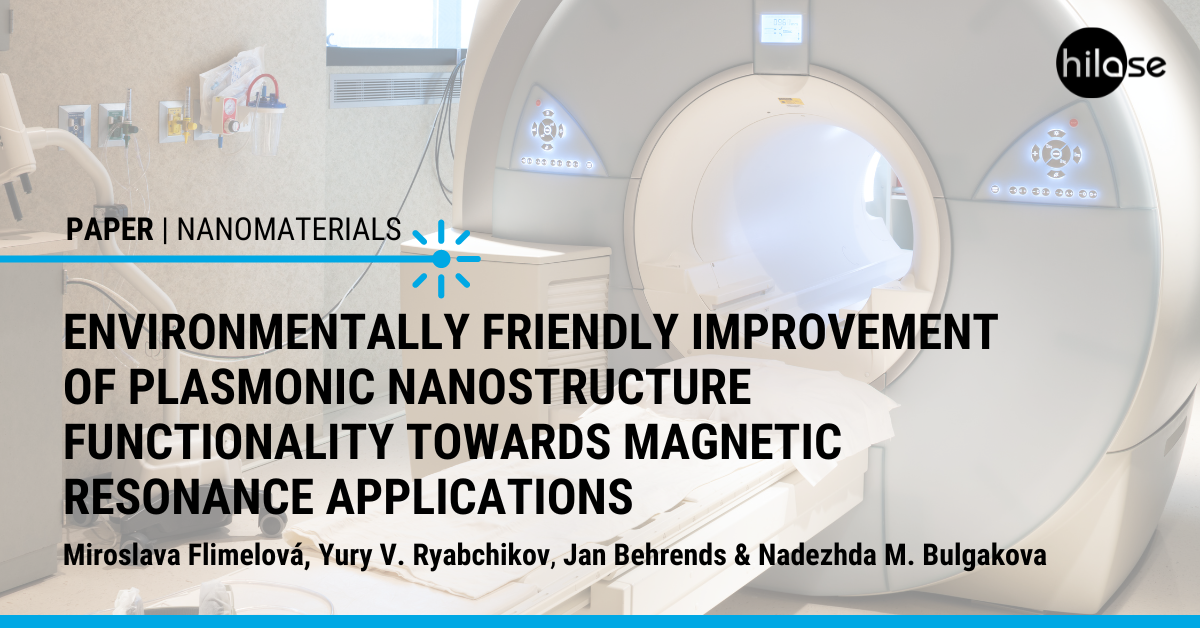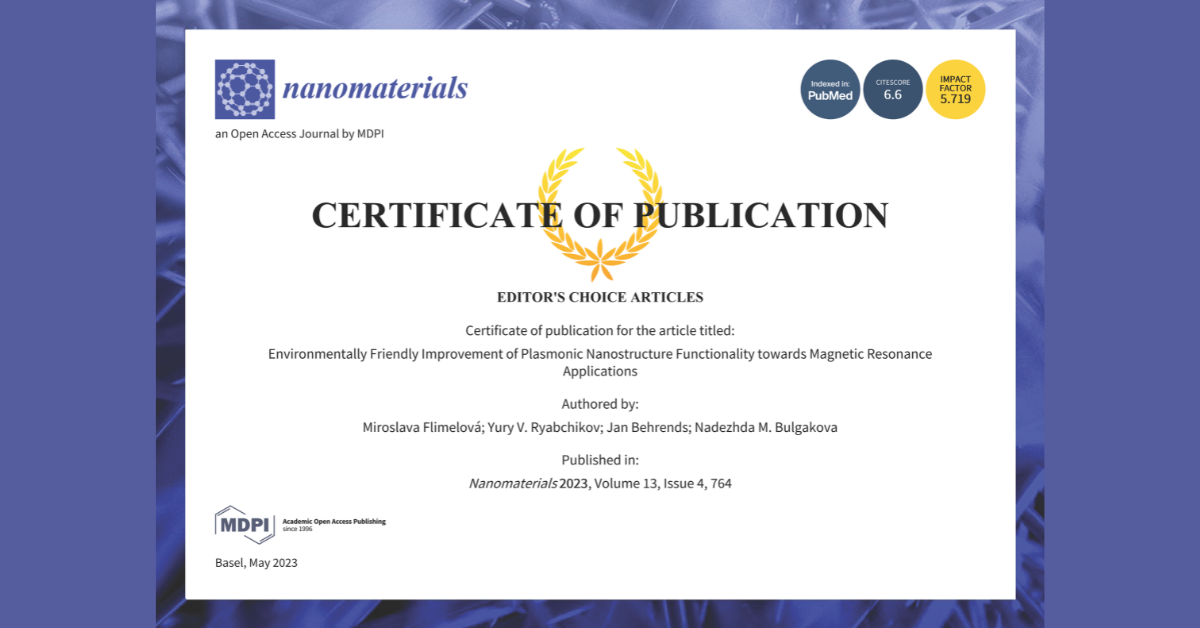HiLASIANS Miroslava Flimelova, Yury V. Ryabchikov and Nadezhda M. Bulgakova, in collaboration with Jan Behrends (Freie Universität Berlin), published an article in the Nanomaterials journal.
Their contribution, titled Environmentally Friendly Improvement of Plasmonic Nanostructure Functionality towards Magnetic Resonance Applications, is concerned with the use of laser for the ablation of plasmonic nanostructures.

Plasmonic nanostructures have attracted a broad research interest due to their application perspectives in various fields such as biosensing, catalysis, photovoltaics, and biomedicine. Their synthesis by pulsed laser ablation in pure water enables eliminating various side effects originating from chemical contamination. Another advantage of pulsed laser ablation in liquids (PLAL) is the possibility to controllably produce plasmonic nanoparticles (NPs) in combination with other plasmonic or magnetic materials, thus enhancing their functionality. However, the PLAL technique is still challenging in respect of merging metallic and semiconductor specific features in nanosized objects that could significantly broaden application areas of plasmonic nanostructures. In this work, we performed synthesis of hybrid AuSi NPs with novel modalities by ultrashort laser ablation of bulk gold in water containing silicon NPs. The Au/Si atomic ratio in the nanohybrids was finely varied from 0.5 to 3.5 when changing the initial Si NPs concentration in water from 70 µg/mL to 10 µg/mL, respectively, without requiring any complex chemical procedures. It has been found that the laser-fluence-insensitive silicon content depends on the mass of nanohybrids. A high concentration of paramagnetic defects (2.2 × 1018 spin/g) in polycrystalline plasmonic NPs has been achieved. Our findings can open further prospects for plasmonic nanostructures as contrast agents in optical and magnetic resonance imaging techniques, biosensing, and cancer theranostics.
Read the full paper HERE.










